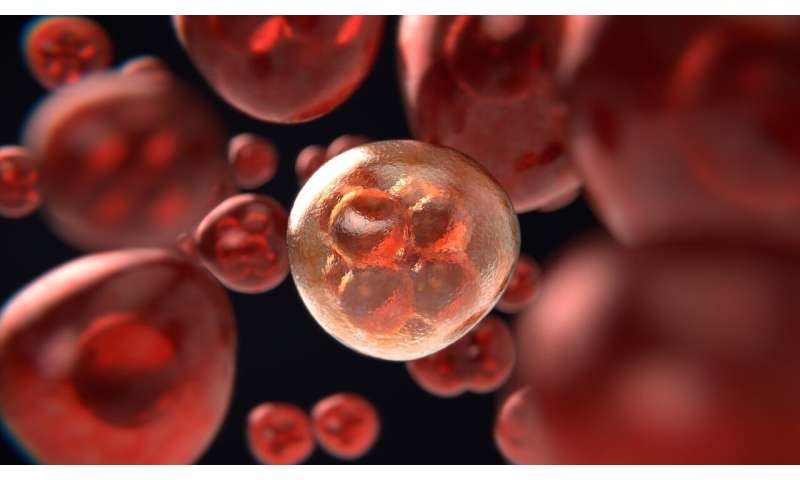
To fuel their rapid proliferation, tumor cells rely on glycolysis, a primordial metabolic pathway that is easily exploited by cancers to gain energy to grow—and spread.
Glycolysis is the oldest form of energy production in living cells. It has been around for billions of years, having emerged before oxygen accumulated on Earth, and was the type of energy production for the planet’s first primitive forms of life.
The process involves the breakdown of glucose to yield energy for cellular metabolic activities. Bacteria use glycolysis, as do more complex organisms such as plants and animals. The latter, however, have developed more sophisticated forms of energy production, despite still having glycolysis with its lower energy yield. For example, the electron transport chain produces substantially more ATP—energy molecules—than does glycolysis. Still, many types of tumor cells use glycolysis preferentially to provide sufficient energy for growth and proliferation.
High rates of glycolysis in cancer cells remain a well-established characteristic of many human tumors, report Drs. Jeremy Blaydes and Charles N. Birts of the Cancer Sciences Unit, Faculty of Medicine, at Southampton University in England. The energy-producing process provides cancer cells with metabolites that can be used as precursors for anabolic pathways.
Writing in the journal Science Signaling, Blaydes and Birts, along with a team of cancer researchers, found that in an in vitro breast cancer model, they were able to identify something startling new—they call it a glycolytic stress response, involving p53. The p53 gene carries the DNA blueprint for a protein called tumor protein p53. The protein plays a critical role policing cellular activities, such as cell division and cell death. Mutations in p53, studies have long shown, allow cancer cells to grow and spread.
“Constitutive aerobic glycolysis—the Warburg effect—is a hallmark of cancer cells that is commonly caused by mutations in oncogenes and tumor-suppressor genes,” Blaydes and Birst wrote in Science Signaling.
“It has multiple consequences for tumor cells, including the ability to generate adenosine 5′-triphosphate (ATP), which decreases reliance on oxygen for ATP generation, thus reducing the generation of potentially damaging reactive oxygen species (ROS) by the mitochondrial electron transport chain,” the cancer researchers concluded.
In the 1920s, Otto Warburg demonstrated that cultured cancer cells have high rates of glucose uptake and secretion of lactate, even without a need for oxygen. Those three properties—glucose uptake, lactate secretion and creating energy without oxygen, are hallmarks of the Warburg effect.
Warburg was a German scientist in the early 20th century who first studied sea urchin eggs, but turned his attention to rat tumors in 1923. That switch had a lasting impact on the discipline of cancer biology, particularly in the understanding of energy production and use in tumor cells. Warburg noticed that cancer cells fueled their own growth by sucking in huge amounts of glucose from the host’s blood. Today, positron emission scans can help identify cancers by pinpointing areas of the body where enormous amounts of glucose are being consumed by cells. Those cells are easily identified as cancerous because of their unmitigated greed for glucose.
Moreover, cancer cells invariably choose the ancient metabolic pathway—glycolysis—to produce energy. Cancer cells, Warburg realized, had figured out a way to ensure their survival by exploiting the oldest form of energy production on the planet. The Warburg effect is estimated to occur in 80 percent of cancers.
Now, the University of Southampton team is shedding new light on the energy production in cancer cells by zeroing in on p53. The protein, the researchers found, is regulated by “aerobic glycolysis” in cancer cells. This is further mediated by the CtBP family of NADH-dependent transcriptional regulators, something Warburg never would have expected. “Through the provision of glucose-6 phosphate for the oxidative pentose phosphate pathway, glycolysis also facilitates the generation of a reduced form of nicotinamide adenine dinucleotide phosphate, which provides reducing equivalents for reactive oxygen species-protective pathways,” the team wrote.
Delthia Ricks , Medical Xpress

